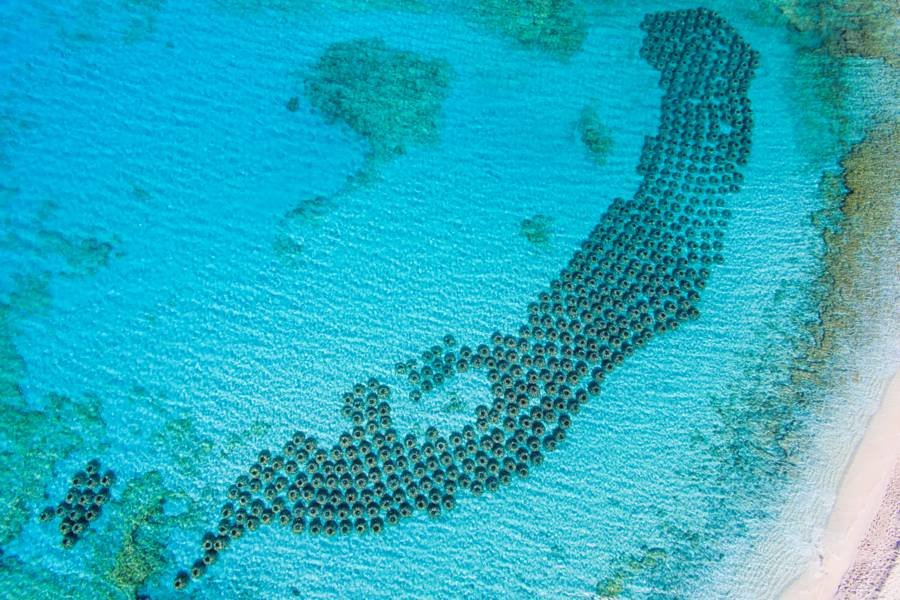Coral reefs are the habitat of various species of fish, mollusks and turtles. Its critical role in marine environments encompasses water filtration, protection of endangered fish, protection of coasts against storms and storm surges, and prevention of coastal erosion.
These marine ecosystems, in addition to having a valuable environmental importance, are also the basis of socio-economic activities related to tourism and fishing. In the case of tourism, on many occasions, part of the diving activities includes visits to coral systems; which is one of the main attractions of tourist destinations that attract the attention of a large number of visitors. With regard to fishing, their most valuable contribution comes from the contribution they make by acting as a refuge for a varied number of marine species such as fish. Also providing areas for feeding, reproduction and balance between prey and predators.

Source: https://www.usgs.gov/media/images/coral-reef
Coral reefs are threatened by anthropogenic activities, either directly or indirectly in coastal and / or marine environments. An example would be the development of trade in the hands of the construction or expansion of port facilities that sometimes lead to the disturbance or destruction of these types of ecosystems. Another example can be the discharge of waters with a high content of organic matter or sediments laden with nutrients in the sea that create eutrophication problems, and the spills of harmful substances such as oil.
Despite the adversities already described, the main current threat to coral reefs is due to the bleaching of corals and acidification of the oceans, produced by climate change. The bleaching of corals is due to the increase in temperature in the oceans, generating stress on the coral that consequently causes it to expel the algae. On the other hand, the acidification of the oceans is the product of uncontrolled emissions of carbon dioxide (CO2) into the atmosphere; the oceans absorb part of these emissions, generating a decrease in the pH levels present in seawater. This last threat directly affects the fixation of calcium carbonate (CaCO3) necessary for the formation of reef skeletons.
To avoid the degradation of these marine ecosystems and at the same time encourage their reconstruction, initiatives related to the creation of artificial reefs have been originated. This term refers to a set of structures of different classes and materials, strategically located in marine ecosystems where it is required to provide shelter for various species or provide protection to coastal areas affected by erosion processes due to waves.
Artificial reefs can generally be built from precast concrete structures, but they also include everything from old tires, wooden structures and concrete blocks, to old boats, trucks, cars and airplanes. In the latter they are conditioned to function for this purpose sustainably by extracting all kinds of substances such as oils that may be harmful to the marine environment.
Currently, artificial reefs of the Reefball type are one of the most used due to the resistance of the materials used in their construction, greater stability in high wave areas and contribution to the natural landscape. This type of system can also be used as a submerged breakwater if factors such as submergence, the width of the breakwater, the roughness of the breakwater and the wave energy are taken into account. Additionally, due to their structure, these types of elements favor the deposit of fine sediments on the coast, which makes them suitable in projects related to the recovery of eroded beaches.


Source: www.reefball.org
In recent years, investigations have been developed that analyze the compatibility in the use of artificial reefs with the development of offshore wind energy, to mitigate the effects of wave action on the foundations of wind turbines and their ability to provide new habitats in environments that have been disturbed.
As mentioned, among the most notable benefits of natural and artificial coral reefs is the protection they offer to the coasts due to the damaging effects of the action of waves and tropical storms. Entities such as the United States Geological Survey (USGS, for its acronym in English), support the need to develop strategies such as complete maps in high resolution that show the benefits or profitability of coral reefs against coastal vulnerability to flooding. Since with the availability of this information, a greater inclusion of the restoration of coral reefs by governments and communities would be achieved.
Bibliography:
http://www.fondear.org/infonautic/mar/vida_marina/arrecife_artificial/arrecife.htm
